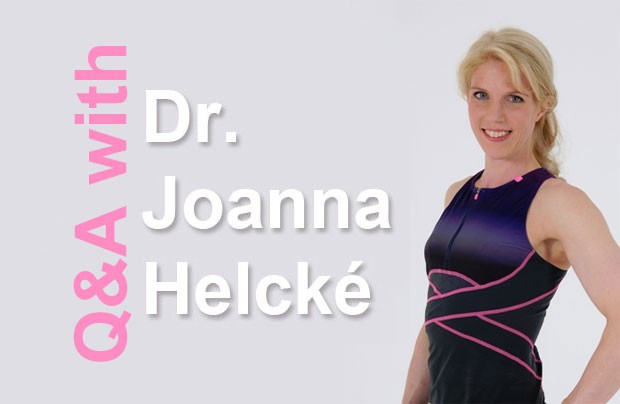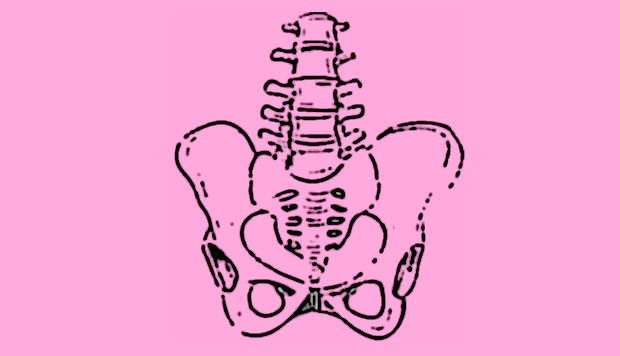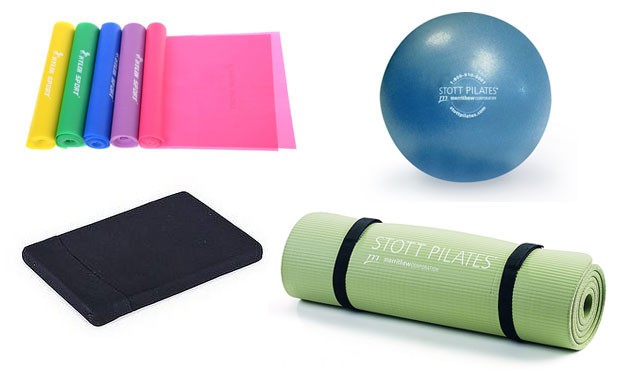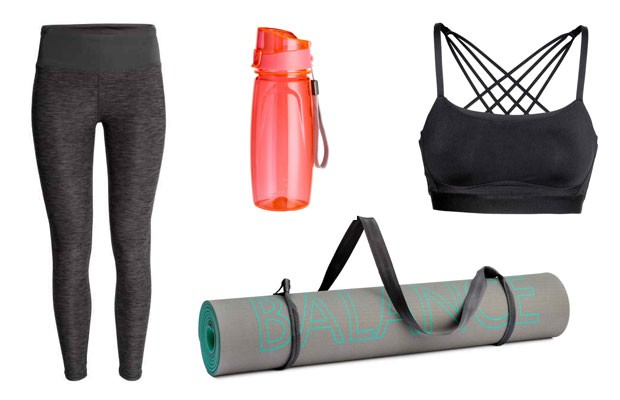Q&A With Dr. Joanna Helcké – About Pregnancy & Postnatal Pilates

Q&A With Dr. Joanna Helcké – About Pregnancy & Postnatal Pilates
A few weeks ago, I started doing online pregnancy pilates with Dr. Joanna Helcké. I was offered the opportunity to send Dr. Joanna Helcké some questions to be answered here on my blog. I’ve chosen questions that are relevant to myself and many other pregnant women and questions about pilates equipment for beginners. I hope you find this as helpful as I do. Thank you Dr. Joanna Helcké for answering my questions!
- I have pelvic girdle pain. Is there anything I should be particularly mindful of when doing the exercises? Are there any exercises that might help?
I’m sorry to hear that you have got pelvic girdle pain – it’s most unpleasant – and I do hope it doesn’t get worse as pregnancy progresses. All being well it will resolve postnatally. PGP needs to be carefully managed in pregnancy, the ultimate aim being to avoid aggravating the situation. So the very first rule is to stop doing (as far as is possible) things that you notice exacerbate the pain.
Bearing this in mind, it is very much a case of managing the situation and here are some key points:
Firstly, anything that involves being on a single leg is liable to hurt, so try to minimise these movements. For example, you might well find that walking hurts after a while. If so, don’t go too far. Similarly, climbing step can be painful: minimise this activity and have a go at leading with the leg that is less painful

Secondly, sideways stepping movements which involve separating the legs can be particularly bad with PGP and should be avoided if at all possible. Examples are stepping in and out of the car, getting out of bed, stepping into a bath, and so on. Try to swivel yourself out of the car or of bed with the knees firmly together and have a shower instead of a bath!
Thirdly, sleep with something between the knees AND the ankles – your aim is to keep the legs hip width apart as this will reduce pressure through the pelvic area.
Translating these points in terms of exercise, always focus on keeping your feet no further than hip width apart and avoid doing single leg raises, such as “superman” where you are on all fours and you raise opposite arm to leg. The arm movements are fine but miss out the leg raises. Similarly, you do not want to be doing typical “legs bums and tums” exercises that involve lying on your side and raising your leg – this would be very painful and inadvisable. If you are doing side lying exercises such as pelvic floor work, then make sure you place a small pillow or cushion between both the knees and the ankles so as to maintain alignment throughout. This will really help.

I’d also suggest popping over to the Pelvic Partnership website where you will find lots of information and also a support group that you can join – it’s an excellent resource. Finally, you mention adapting my online pregnancy workouts for PGP: the good news is that I give guidance throughout every workout on how to adapt if you are suffering from this condition.
Oh and before moving on, here are a couple of really useful tips:
· To test whether it really is PGP and to find out whether or not it is worth investing in a support belt, try this: stand with your feet directly under your hips and wrap a scarf tightly round your hips. Does the pain subside or is it worse? If the scarf helps then I would consider investing in a support belt and asking a physio to show you how to wear it properly.
· Secondly, take a piece of tape or string and gradually take your feet apart (the way I have been telling you notto do). When you feel the pain kick in, stop and bring the feet very slightly together until the pain dissipates. Now use the tape or string to measure the distance between the inner parts of your knees. If you are going to hospital to give birth, you can give the health care professions the piece of string and tell them that your knees must not go further apart than the string is at all possible. This will help protect you!
- What equipment do I need to do Pilates? What kit would you recommend for beginners?
It is perfectly possible to do all sorts of mat-based and standing Pilates exercises with nothing more than a mat and yourself. Having said that, I would suggest investing in the following: a small (15-20cm) Pilates ball, a medium strength resistance band, a mat and a Pilates cushion. I also think that a birthing ball is amazing both during and after pregnancy. Here’s a little secret that I haven’t shared with anyone yet: over the last year I’ve been working behind the scenes on developing a really awesome little pregnancy Pilates kit. It is soooo cute! It’s still all pretty hush hush but the brand is launching in the next few weeks. Let me know if you’d like to be one of the first to try the kit out!

- I want to buy a Pilates ball. Do you have any recommendations for a ball that is good quality but affordable?
OK, so there are the little 15-20cm Pilates (physio) balls that can be bought and there are also the big birthing balls which you can sit on – which one would you like to get? They are both really good for pregnancy and beyond, to be honest. By the way, you’ve asked me this question on the perfect day because I am actually having some really high quality birthing balls and Pilates balls manufactured especially for pregnancy and early motherhood – and today was the day that the samples arrived all the way from Italy! So in a few weeks’ time I’ll be able to say “you can buy a brilliant birthing ball from me!” In the meantime, the company that I suggest is Physical Company because they supply gyms and health clubs across the UK and the balls they stock are high quality. The problem with buying a really cheap birthing ball or Swiss ball is that they tend to be very squashy and soft, which means that they cannot support you properly in pregnancy. I would rather you spent a little more and ended up with a high quality one.
- How can Pilates help me prepare my body for giving birth to my baby?
Pregnancy Pilates is helpful on a number of fronts when it comes to preparing for birth: it will help to keep you strong all whilst maintaining mobility in the back. Working the deep abdominals will not only keep the deep abdominals toned but will also gently stimulate the all-important pelvic floor muscles. Moreover, many of the all-fours exercises used in pregnancy Pilates are particularly helpful for getting your baby into the correct position ready for birth. Using the birthing ball as a seat and to perform pelvic tilts, pelvic circles and rocking – all Pilates movements – can also help you manage early labour more effectively.
- How soon after a straightforward birth can I resume the programme?
What’s lovely about my online pregnancy and postnatal Pilates programme is that it carries on uninterrupted and seamlessly from pre to postnatal simply at the touch of a button – in other words from week 1 of the postnatal period! Basically the first 8 weeks of the postnatal part of the programme focus on pelvic floor work and exceedingly gentle exercises that can be done (and are good for you) prior to your 6 week check-up. The very early weeks I essentially talk you through all sorts of important information about getting back into shape safely after having a baby, so it should be easy to simply listen to and watch the weekly videos whilst feeding, for example. I bring pelvic floor work in very early on and, again, this is something I’d highly recommend doing in the early days, well before you can resume formal postnatal exercise. After week 8, the programme builds up and every week gets noticeably harder, and I also bring in strength and cardio workouts every other week to add in alongside the Pilates.
- Which Pilates exercises are your personal favourites?
My all-time favourite Pilates exercise is The Bridge which is good for early pregnancy and great for the postnatal period and beyond:
- Step 1 Lie on your back in neutral spine with knees bent and feet flat on the floor. Your feet should be hip width apart and your knees in-line with hips and ankles.
- Step 2 Tuck the pelvis under whilst drawing the abdominals inwards – you should feel your lower back pushing into the floor.
- Step 3 Now start to peel your spine – one vertebra at a time – off the floor. Your aim is to mobilise through every single vertebra and not to miss out “patches” of spine as you roll upwards.
- Step 4 You have reached the top of the move when your body is in a diagonal line from shoulders up to knees.
- Step 5 Now start to roll very slowly back downwards without missing any section of your spine. It will probably feel harder on the way down, so slow down your movement and really focus on getting each vertebra to work separately.
- Repeat until your back feels more mobile and less stiff.
Thank you, Dr. Joanna Helcké!




